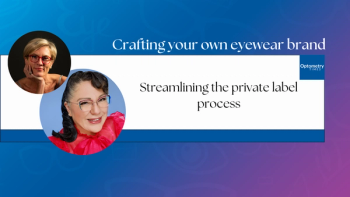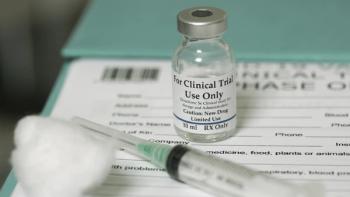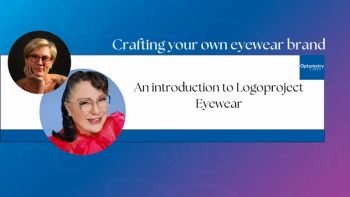
- Optometry Times August 2019
- Volume 11
- Issue 8
What happened over 10 years
Optometry Times is celebrating an anniversary! Although we don’t look a day over 5, we’re turning 10! With respect to our diamond anniversary, we thought we’d compare and contrast the state of affairs in the optometry universe, then and now.
Expansions in scope of practice, industry consolidation, newer schools and colleges of optometry, and product launches, to name just a few, have continued to change the face-and embodiment-of contemporary eye care as the years have gone by. Much change has been welcomed with open arms, while some has been met with fierce resistance.
Also by Dr. Casella:
Let’s hit some high points, shall we?
Scope expansion
Here are a few accomplishments on the part of organized optometry in the U.S. over the past decade:
• 2010: West Virginia ODs gains the authority to update their formularies to include certain injected medications and procedures.
• 2011: Kentucky ODs join Oklahoma ODs with the authority to provide certain laser procedures.
• 2014: Louisiana ODs gain certain laser privileges.
• 2017: Georgia ODs expand their scope of practice to include certain injected medications, as well as update their drug formulary.
• 2017: The Alaska Board of Examiners in Optometry is granted board autonomy with respect to the legislature.
• 2018: Virginia ODs gains the authority to utilize certain injectable medications.
• 2019: Arkansas ODs gain certain laser and injection privileges.
A simple Internet search of the words “
Of course, there exists opposition to any proposed scope expansion. The opposition tends to be-at least overtly-centered around the notion that ODs will harm patients if given certain privileges.
I can recall being called “disingenuous and frankly disturbing” in a legislative committee for stating how difficult it would be to miss an eyelid with a needle and cause bilateral blindness (an opposing argument previously stated) while being questioned while testifying on behalf of our bill in Georgia. I sure hope that lawmaker is wrong about me.
It is true, though, that scope expansion begets somewhat of the same arguments with each battle.
Access to care is a deserving theme in the argument for most scope expansion legislation. Many people refuse to believe that access to proper eye care is still a concern in the U.S., but it is. Amazingly, I have witnessed it personally in my metropolitan area with a population of about 500,000.
Related:
Patient safety is routinely brought up as an argument against scope expansion. Fortunately, no one has a monopoly on knowledge and learning.
Achieving so-called “board autonomy,” which means not having to petition a legislature for scope changes, on a national level and, thus achieving a somewhat unification of the profession is a conversation worth continuing.
Practice how you are taught to practice. What a concept!
Industry
The eyecare industry has seen changes over the past 10 years as well. Here are some highlights.
EssilorLuxottica. Need we say more? A highly significant merging of two companies in the history of the ophthalmic materials industry (literally on the order of tens of billions of dollars-or shall we say euros?) was a huge story for our readers a couple of years ago.
With subsidiaries such as LensCrafters, Pearle Vision, Sunglass Hut, Eyemed, Transitions Optical, Ray-Ban, Costa, and Kodak Lens, these companies independently controlled a significant portion of ophthalmic goods and managed care. What many ODs wanted to know was how this gigantic merger would affect their day-to-day lives, and I’m still wondering the same. Of course, it takes time for such mergers to happen, and the effects are often trickle-down in nature.
Valeant Pharmaceuticals International acquired Bausch + Lomb back in 2013. B + L retained its name, thus becoming a division of Valeant. Having been around since the 1800s, the B + L name was worth keeping around.
National Vision Inc. (NVI) and Nova Southeastern University College of Optometry announcing a philanthropic gift to include naming rights from NVI to the school drew considerable opinion from ODs and students both in and out of the Nova community. Students wore black arm bands in protest of the renaming of their school, and, after both sides had dialogue concerning the opinions expressed, it was decided that, at least in this particular scenario, the corporate and academic sectors would keep their respective nomenclatures separate.
Related:
The
The American Optometric Association (AOA) has continued to press the FTC to halt the substitution of the contact lenses doctors prescribe for different lenses that manufacturers market to consumers without our knowledge, let alone our active consent. Ten years ago, I would have thought it would be as easy as saying to a lawmaker: “Look! It’s not substituting brands of socks! It goes on your eye! That’s the part of your body that is largely responsible for your sight!” If only life were that simple.
Related:
Product launches
The
The daily disposable modality continues to garner popularity, and, for obvious reason, multifocal
Falling into the category of interesting new contact lens products, Johnson & Johnson Vision launched Acuvue Oasys with Transitions contact lenses.
Related:
The
Optometry has continued to keep on top of one disease it should own from start to finish: dry eye disease.
Speaking of dry eye disease, the lipid layer of the tear film continued to garner more attention over the last decade, as Refresh Optive Advanced (Allergan) and Systane Balance (Alcon) became available as artificial tears targeting this layer. As well, TearScience gained approval of LipiFlow (now owned by Johnson & Johnson Vision), a thermal pulsation device designed to improve meibomian gland function. Further, with advances in meibography over the last decade, we are able to better visualize this major contributor to dry eye disease. I, for one, had forgotten just how long those glands were until I saw a meibography image of them.
Alcon also launched iLux in 2019 for the treatment of meibomian gland dysfunction.
Related:
It utilizes light-based heat and compression to improve glandular function. Intense pulsed light (IPL) therapy combined with meibomian gland expression has also garnered much more attention as a treatment of dry eye, and recently launched Sight Science TearCare has joined the ranks of meibomian gland treatment.
Allergan announced its launch of the TrueTear nasal neurostimulator device in 2018, a thought-provoking technique for treating dry eye without having to rely on drops.
Glaucoma was no stranger to innovation in the first 10 years of Optometry Times either.
Minimally invasive glaucoma surgery (MIGS) devices and procedures have changed the face of surgical glaucoma management over the last several years.
As well, the approval and subsequent launch of two new glaucoma medications, we were presented with new and different mechanisms of action for lowering IOP. Vyzulta (Bausch + Lomb), a nitric oxide donating prostaglandin analog, was approved in 2017, as was Rhopressa (Aerie Pharmaceuticals), a Rho kinase inhibitor.
As far as we have come, it should be noted that, just as it was 10 years ago, we still have no therapeutic modality which should come before lowering IOP in the treatment of glaucoma.
Along the lines of combatting ocular allergies, Novartis introduced Pazeo (olopatadine, which is seven times stronger than the original Patanol (olopatadine) introduced all those years ago.
Related:
Just as it was 10 years ago, cataracts still happen, and we still don’t have the holy grail of an IOL that accommodates like your lens did when you were 15 years old. Science is moving at a rapid pace in this arena, however, and scientists continue to uncover ways to make IOL’s accommodate and even be altered after surgery. We press on.
Demodex infestation became quite a craze over the last decade as the great masquerader and lurking variable of ocular surface disease. Although I haven’t read quite as much about it over the past couple of years, I’m highly optimistic that I’ll see one of those little things one day.
Related:
On the “
Advertisements essentially trying to make the OD appear as a middleman between product and patient have made us appear anti-consumer to some. I think optometry has been able to show that the exact opposite is true, and the continuous and incorrect separation of the “refractive component” from the “eye health exam” is ultimately to blame for the very existence of such debates, in my humble opinion.
Related: Visibly (formerly Opternative) still the same company
Through it all, ODs have and must continue to embrace
Look at where we are, for example, with spectral-domain
Further on the point, the concept of telehealth has become a popular subject over the past several years, and it should continue to be embraced for what it is in eye care: a valuable means of care when an in-person eye examination is not possible. May we keep all of this in mind for the next 10 years and beyond.
Related:
Vision care plans
Remember that little thing passed by the 111th Congress known as the Patient Protection and Affordable Care Act, or known colloquially as Obamacare?
Healthcare reform (or, should we say, healthcare payment reform) was and still is top of mind for many Americans, and the AOA ensured that ODs had a seat at the table. ODs made a successful and concerted effort to ensure that access to care laws were upheld and that children’s vision was deemed an essential benefit.
A decade later, proponents both for and against this law are still throwing tomatoes at each other. Lawmakers are still pledging to do something about the incredible costs of healthcare in the U.S. How will the state of healthcare affairs look in another 10 years? Who knows? Maybe by then we’ll be talking more about how to keep people healthy to begin with.
Related:
New schools and colleges of optometry
The last decade or so has seen several new schools and colleges of optometry open their doors. The doctor of optometry degree seems to have increased in popularity-and rightfully so given the aging population and subsequent and expected demand on healthcare as a whole.
There has been hallway discussion regarding whether or not more schools were needed and what the end result would be for the profession. As long as the governing bodies that be keep with the rigorous standards which must be met to earn the OD degree, we are going to be just fine-even better.
We, at Optometry Times, even
We changed, too
When we first started this publication, the print product was all you got.
Now readers are able to access Optometry Times content on
These past 10 years with you have been wonderful since we have gotten to know one another. The challenges of starting a new publication, fostering its development, and striving to bring you, the hard-working clinician with no shortage of publications to choose from, practical chairside advice has been an incredible experience. We love and appreciate you all, and we raise our proverbial glasses to you in celebration of our anniversary and toast to many, many more.
Articles in this issue
over 6 years ago
The possible connection among kids, devices, and myopiaover 6 years ago
OD research at ARVO 2019over 6 years ago
How to guide patients in the use of digital devicesover 6 years ago
Accident or child abuse?over 6 years ago
Controversies in pediatric refractive developmentover 6 years ago
How to treat dry eye in the pediatric and young adult populationover 6 years ago
Is optometry ready for the age of smartphone imaging?over 6 years ago
Q&A: Barbecue, OD-MD communication, lifelong learningover 6 years ago
How climate change affects allergiesNewsletter
Want more insights like this? Subscribe to Optometry Times and get clinical pearls and practice tips delivered straight to your inbox.














































.png)


